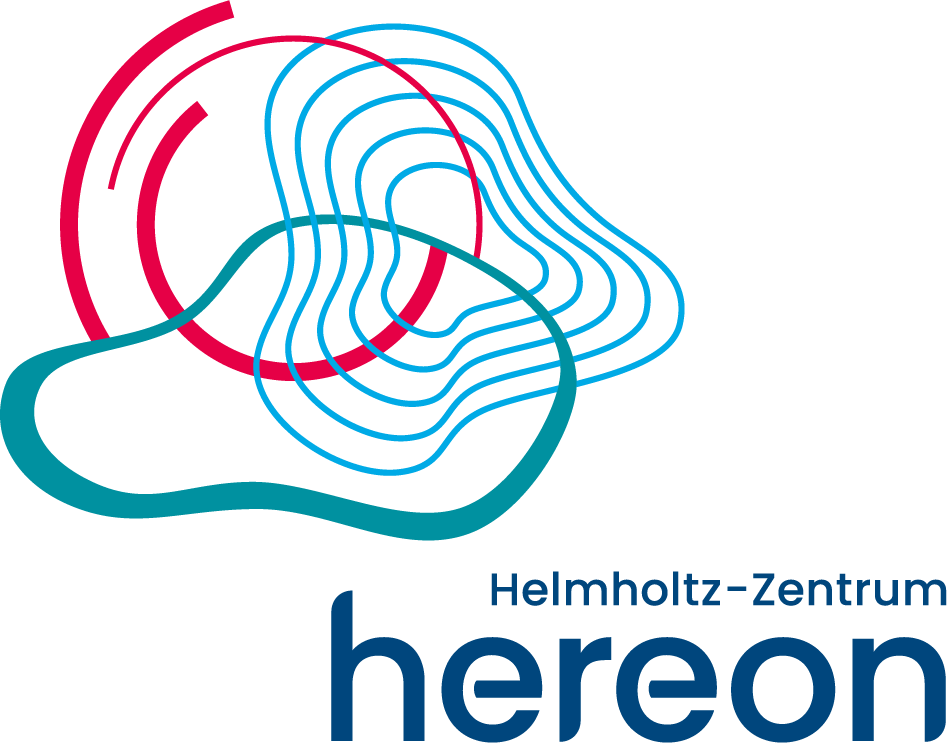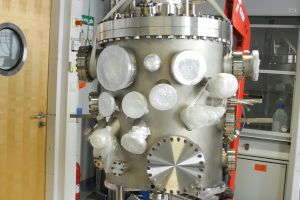MLZ is a cooperation between:
 > Technische Universität München
> Technische Universität München > Helmholtz-Zentrum Hereon
> Helmholtz-Zentrum Hereon
 > Forschungszentrum Jülich
> Forschungszentrum Jülich
MLZ is a member of:
 > LENS
> LENS > ERF-AISBL
> ERF-AISBL
MLZ on social media:

MLZ (eng)
Lichtenbergstr.1
85748 Garching
MBE Facility Provides Taylored Thin Film Growth for Users
The Jülich Centre for Neutron Science (JCNS) operates an Molecular Beam Epitaxy (MBE) system to prepare tailored thin film samples for the investigation with the neutron reflectometer MARIA and other neutron scattering instruments at the MLZ.
MBE growth is a fascinating technique to grow high quality epitaxial thin films. Epitaxy means the deposition of a crystalline thin film on single crystalline substrates with well-defined orientation. By this, new materials may be fabricated which reveal unexpected properties, like e.g. ferromagnetism at the interface between two antiferromagnetic layers or conductivity between two insulating layers.
Out of the variety of thin film growth techniques available, MBE is considered to be one of the cleanest, but also one of the most technically challenging and demanding, as for MBE growth ultra-high vacuum (UHV) is required. Precise control of the deposition conditions is mandatory to achieve high-quality thin films. A molecular beam is established inside the chamber either by thermal heating of the material in a crucible (effusion cell) or by heating the material by electron bombardment (e-gun). In the MBE system under operation, there are two e-guns each with four crucibles and six effusion cells, i.e. up to eight different materials can be evaporated simultaneously. Additionally, atomic oxygen or nitrogen are provided by a plasma source. Hence, the MBE setup is ready for growth of oxide, nitride and metal layers in form of heterostructures, multilayers or single layers.
In-situ growth control is achieved by Reflection High Energy Electron Diffraction (RHEED). Additionally, a quartz crystal microbalance is utilized to control the growth rate. Low Energy Electron Diffraction (LEED) and Auger Electron Spectroscopy (AES) instruments are attached to the system for surface structure and chemical analysis, respectively.
Services:
- Thin film growth using MBE growth technique.
- In-situ thin film analysis by Reflection High Energy Electron Diffraction (RHEED), Low Energy Electron Diffraction (LEED) and Auger Electron Spectroscopy (AES).
- Additional sample characterization in the laboratory by Atomic Force Microscopy (AFM).
Specifications of the MBE system
- Base pressure 3 ×10- 10mbar
- Evaporation sources: 6 effusion cells, 2 electron guns (each with 4 crucibles), plasma source for atomic oxygen or nitrogen
- Growth control via quartz micro balances and RHEED (Reflection High Energy Electron Diffraction).
- Substrate manipulator: heating up to 1000°C, optional rotation around the sample normal, sample size maximum 2” diameter or 20 mm x 20 mm, standard is 10 mm x 10 mm, various other options are available, please contact the instrument scientist.
- High reproducibility of sample growth by automated control of the growth procedure.
- Supplied evaporation materials: Ag, Al, Au, Co, Cr, Fe, La, Mn, Ni, Nb, Pt, Pd, Sr and Ti, other elements on request.
A feasibility discussion with the thin film laboratory scientist prior to proposal submission is mandatory.
There are two ways for utilizing the MBE system for sample fabrication:
- Remote Access
For remote access the thin film laboratory scientist fabricates the sample. This approach is only possible in cases where the JCNS staff has experience in.
- Collaborative Access
The user fabricates the sample under supervision of the thin film laboratory scientist. The collaborative access is necessary if research on the proper growth conditions for sample preparation is required.
MBE sample fabrication is possible only in combination with a neutron scattering proposal. During the proposal submission for the neutron instrument, e.g. MARIA or N-REX, in GhOST you will be asked if you would like to submit also an additional proposal for MBE growth.
Template for MBE system access applications – ONLY in combination with a neutron scattering proposal
Contact
Dr. Sabine Pütter (head)
Phone: +49 (0)89 158860-742
E-mail: s.puetter@fz-juelich.de
Thin film laboratory
Phone: +49 (0)89 158860-328
Operated by

Publications
Find the latest publications regarding MBE in our publication database iMPULSE:
News
Gallery






MLZ is a cooperation between:
 > Technische Universität München
> Technische Universität München > Helmholtz-Zentrum Hereon
> Helmholtz-Zentrum Hereon
 > Forschungszentrum Jülich
> Forschungszentrum Jülich
MLZ is a member of:
 > LENS
> LENS > ERF-AISBL
> ERF-AISBL
MLZ on social media:



